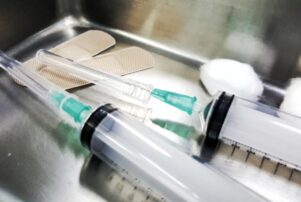Quick — what material comes to mind when you think of medical parts? If you’re like most people, the answer is bright and shiny stainless steel. From scalpels to needles, trays to operating tables, stainless steel just seems so, so medical, right?
The operative term here is “seems”. Because when it comes to medical devices and individual medical components, there is one material which stands head and shoulders above the rest.
That’s right — the healthcare industry is rife with the stuff. Think about it: Yes, syringe needles are made of metal but the actual syringe itself?
Plastic.
Yes scalpels are made of super-sharp metal but the heart valve or hip prosthesis the surgeon implants after he cuts the patient open?
Plastic.
Yes, the stand from which the IV bag is hung is made of metal but the IV bag itself, and the tubing?
Plastic, and more plastic.
You get the point. While metal will probably never be entirely replaced by plastic, more and more medical devices and components are made of plastic. Why?
Malleability: Sure, when heated, metal is can be formed in many shapes. But plastic, when heated, can be formed in an endless number of shapes. When it comes to malleability, especially if produced through plastic injection molding, plastic puts metal to shame.
Tamper-resistant: Metal can be fitted with tamper-resistant features. Think latches and locks and what not. But plastic? There’s a reason pill vials (also made of plastic, by the way) have plastic safety caps and not metal. Plastic safety caps are designed to “break” in just the right way when opened, thus making it obvious they have been opened. You can’t break steel like that, my friend!
And bags? Well, there is no such thing as a metal bag, for one thing, but for another, plastic is simply impervious to leakage, if handled properly. And steel container necessarily has a screw cap of some type, and screw caps can, and indeed do, leak. And while metal parts require some kind of coating to acquire insulating qualities, plastic is naturally heat and cold insulated — no extra coating necessary.
Cost: This one is obvious: when it comes to cost, plastic is far cheaper than steel. That makes it economical to make plastic medical parts “one use”, so they can be thrown away. Because it’s more expensive, metal has to be cleaned and/or sterilized after every use, thus dramatically increasing the chance of contamination and infection.
Much more could be said, but you get the point: plastic medical components are the backbone (pun intended) of the healthcare world!
